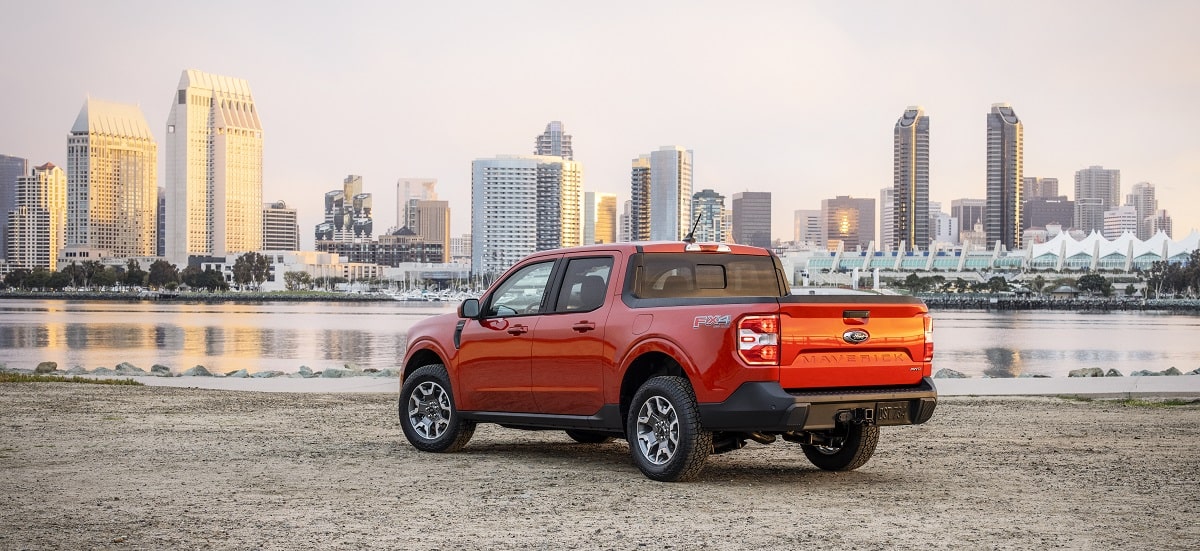If you are experiencing Roadmaster Active Suspension problems, it’s important to troubleshoot and address them promptly to ensure optimal vehicle performance and safety. Common issues may include uneven ride height, excessive bounce, or knocking noises, which can impact the stability and handling of the vehicle.
Understanding the potential causes and solutions for these problems is essential for maintaining the effectiveness of the suspension system. Additionally, seeking professional assistance or referring to the manufacturer’s guidelines can help in resolving specific issues with Roadmaster Active Suspension. By familiarizing yourself with these common problems, you can take proactive measures to address them and ensure a smooth driving experience.

Credit: www.motorcycle.com
Common Issues
Uneven Suspension Performance
One of the common issues encountered with Roadmaster Active Suspension systems is uneven suspension performance. This problem can be evident through a noticeable imbalance in the vehicle’s ride and handling. The uneven suspension performance can lead to discomfort for occupants and potential safety concerns, especially during cornering and braking maneuvers. Owners may also experience a lack of stability and control, ultimately impacting the overall driving experience.
Excessive Wear And Tear On Components
Another prevalent problem related to Roadmaster Active Suspension systems is excessive wear and tear on components. Over time, the continuous stress and strain on the suspension components can lead to premature wear and tear. This can result in the deterioration of vital parts such as springs, shocks, and mountings. The increased wear and tear not only affect the functionality of the suspension system but also contribute to heightened maintenance costs and the need for more frequent replacements.

Credit: gmauthority.com
Impact On Vehicle
Roadmaster Active Suspension problems can lead to adverse effects on vehicle handling and stability. The issues may result in compromised ride quality and safety. It is important to address any problems promptly to ensure optimal performance and driver confidence.
Impact on Vehicle When dealing with Roadmaster Active Suspension problems, it’s crucial to understand how these issues can directly impact your vehicle. From handling and stability concerns to the risk of vehicle damage, these problems can significantly affect your driving experience and the overall condition of your vehicle. Handling and Stability Concerns One of the primary areas that Roadmaster Active Suspension problems can impact is the handling and stability of your vehicle. With a faulty suspension system, you may experience increased body roll, reduced steering responsiveness, and a less controlled overall driving experience. Furthermore, a compromised suspension can lead to a lack of traction, making it more challenging to maintain control of the vehicle, especially in challenging driving conditions such as sharp turns or bumpy roads. Risk of Vehicle Damage Another critical aspect affected by Roadmaster Active Suspension problems is the risk of vehicle damage. A faulty suspension system can put additional strain on various components of the vehicle, such as the tires, brakes, and steering system, potentially leading to premature wear and tear and an increased likelihood of mechanical issues. Moreover, prolonged driving with a compromised suspension can also impact the vehicle’s structural integrity, leading to potential frame or body damage, as well as an increased risk of accidents due to compromised safety and control. In conclusion, addressing Roadmaster Active Suspension problems is crucial to ensuring a safe and stable driving experience while also preventing costly and avoidable vehicle damage.Causes Of Problems
Roadmaster Active Suspension problems can stem from various causes that affect the system’s performance and longevity. Identifying these causes is crucial in ensuring the proper functioning of the suspension system. Below, we delve into the common reasons behind Roadmaster Active Suspension problems.
Improper Installation
Incorrect installation can lead to a range of issues with the Roadmaster Active Suspension system. The alignment of components is critical for optimal performance.
Ensuring proper installation by following manufacturer guidelines is essential to prevent malfunctions and premature wear.
Lack Of Maintenance
Regular maintenance is key to ensuring the Roadmaster Active Suspension system operates efficiently over time.
Failure to perform routine checks and maintenance can result in decreased performance and potential system failures.

Credit: www.motorcycle.com
Diagnostic Methods
When it comes to identifying and resolving Roadmaster Active Suspension problems, accurate diagnosis is key. By employing the right diagnostic methods, you can quickly identify and address any issues that may arise.
Physical Inspection
A physical inspection is the first step in diagnosing Roadmaster Active Suspension problems. This involves visually examining the suspension components and looking for any signs of wear, damage, or misalignment. Here are a few key areas to pay attention to:
- Check the condition of the suspension springs, looking for any signs of sagging, cracking, or corrosion.
- Inspect the leaf springs for any broken or deformed leaves, as well as signs of rust or fatigue.
- Examine the shackles and bushings for wear and tear, ensuring they are securely fastened.
- Verify that all mounting points are intact and free from damage.
- Look for any leaks or damage in the shock absorbers.
Using Diagnostic Tools
In addition to a physical inspection, utilizing diagnostic tools can provide valuable insights into Roadmaster Active Suspension problems. These tools help to measure and analyze various aspects of the suspension system, allowing for a more thorough diagnosis. Here are some commonly used diagnostic tools:
| Diagnostic Tool | Description |
|---|---|
| OBD-II Scanner | An OBD-II scanner plugs into the vehicle’s onboard diagnostics port and retrieves error codes, providing information about any system malfunctions. |
| Suspension Analyzer | This tool measures suspension characteristics such as ride height, wheel alignment, and load distribution, helping to identify any irregularities. |
| Compression Tester | Used to measure the compression levels in the suspension springs, indicating their overall condition and functionality. |
| Shaker Table | A shaker table applies controlled vibrations to the suspension system, allowing for the detection of weak or worn-out components. |
By leveraging both physical inspection and diagnostic tools, you can accurately diagnose Roadmaster Active Suspension problems and take the necessary steps to address them. Whether it’s identifying worn-out springs, loose mounting points, or other issues, a thorough diagnosis provides a solid foundation for effective troubleshooting.
Troubleshooting Techniques
When it comes to Roadmaster Active Suspension problems, it’s essential to have effective troubleshooting techniques in place. By identifying and resolving issues promptly, you can ensure the optimal performance of your suspension system. This section explores two key troubleshooting techniques: adjustment of suspension settings and replacing worn-out components.
Adjustment Of Suspension Settings
Proper adjustment of suspension settings is crucial to eliminate common problems associated with the Roadmaster Active Suspension system. Here’s a step-by-step guide to help you optimize your suspension settings:
- Start by determining your vehicle’s weight distribution to ensure accurate adjustment. This can be done by measuring the distance between the front and rear axles and comparing them to the manufacturer’s specifications.
- Next, adjust the tension on each spring to achieve the desired level of support. This can be done by tightening or loosening the adjusting nut found on the individual spring packages.
- Take your vehicle for a test drive and evaluate its performance. If you notice any excessive bouncing, sway, or sagging, further adjustments may be required.
- Continue fine-tuning the suspension settings until you achieve the perfect balance between comfort and stability.
Remember, it’s important to make gradual adjustments and test the vehicle after each change to ensure optimal results. If you’re unsure about the specific settings for your vehicle, consult the Roadmaster Active Suspension manual or reach out to their customer support for guidance.
Replacing Worn-out Components
Sometimes, Roadmaster Active Suspension problems can arise due to worn-out components. To tackle these issues effectively, consider the following steps to replace any damaged or worn parts:
- Inspect your suspension system thoroughly, paying close attention to any signs of damage, corrosion, or excessive wear.
- If you notice any issues, identify the specific component that needs replacement. This could include leaf springs, brackets, or U-bolts.
- Order replacement parts directly from Roadmaster Active Suspension or an authorized dealer to ensure compatibility and optimal performance.
- Follow the manufacturer’s instructions to remove the old component and install the new one correctly.
- Test your vehicle’s suspension system after the replacement to verify that the problem has been resolved.
Regular maintenance and prompt replacement of worn-out components can significantly extend the lifespan of your Roadmaster Active Suspension system, ensuring consistent performance on the road.
Expert Recommendations
When dealing with Roadmaster Active Suspension problems, following expert recommendations is crucial for maintaining your vehicle’s performance and ensuring safety on the road.
Regular Maintenance Practices
1. Inspect suspension components regularly for wear and tear.
2. Keep your suspension system clean from dirt and debris.
3. Follow the manufacturer’s recommended maintenance schedule.
Seeking Professional Help
1. Consult with a qualified mechanic for any suspension issues.
2. Address any unusual noises or vibrations promptly.
3. Trust the expertise of a professional for complex suspension problems.
Frequently Asked Questions For Roadmaster Active Suspension Problems
What Are The Common Roadmaster Active Suspension Problems?
Roadmaster Active Suspension problems can include issues with installation, compatibility with certain vehicles, and potential adjustments needed for optimal performance. These problems can be resolved with proper installation and by contacting Roadmaster for any troubleshooting or support needed.
How To Troubleshoot Roadmaster Active Suspension Issues?
To troubleshoot Roadmaster Active Suspension issues, start by checking the installation for any mistakes or missed steps. Verify that the suspension is compatible with your vehicle and make any necessary adjustments as recommended by the manufacturer. If the problem persists, contact Roadmaster support for assistance.
Are There Any Maintenance Requirements For Roadmaster Active Suspension?
Roadmaster Active Suspension does not require any specific maintenance. However, it is recommended to regularly inspect the suspension for any signs of wear or damage. Periodically cleaning and lubricating the components can help ensure smooth operation and longevity of the suspension system.
Can Roadmaster Active Suspension Be Installed On Any Vehicle?
Roadmaster Active Suspension is designed to fit a wide range of vehicles, including trucks, SUVs, and vans. However, it is important to check the compatibility of the suspension with your specific make and model. Consult the Roadmaster website or contact their support for assistance in determining the suitability for your vehicle.
Conclusion
Addressing Roadmaster Active Suspension problems calls for a proactive approach. Regular maintenance and timely troubleshooting can help maintain optimal performance. Stay informed on common issues and seek professional help when needed to ensure smooth driving experiences. Prioritize safety and reliability for a worry-free ride.